Breaking ground in paradise
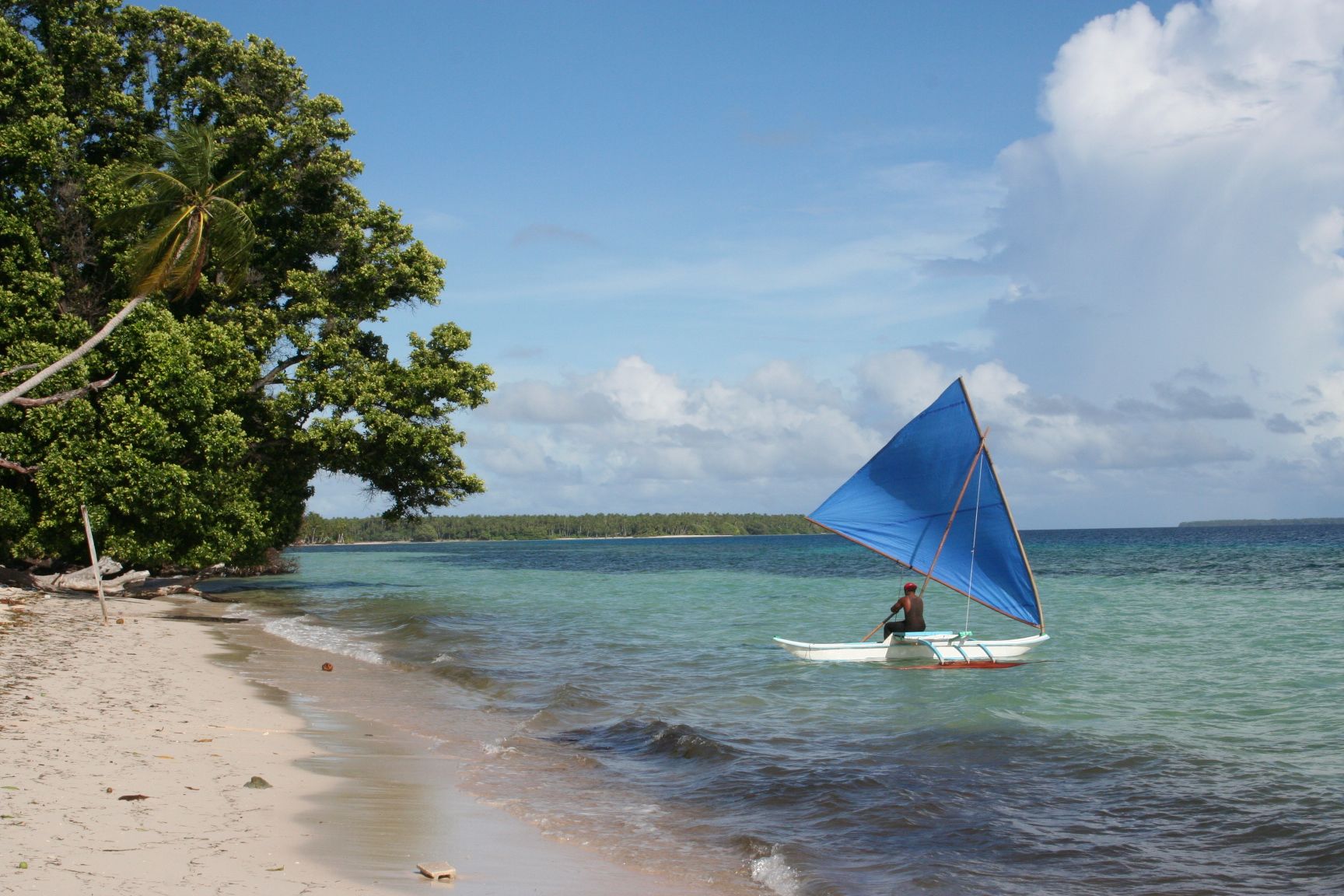
UQ archaeologist's career exploring prehistory in the Pacific
Across more than 40 years as an archaeologist, UQ’s Professor Marshall Weisler has spent much of his life in some of the world’s most fascinating and untouched corners – isolated villages, an uninhabited island, and communities across Polynesia, Micronesia, Hawaii and New Zealand – all in the name of discovering what makes us human.
On the eve of his retirement and ahead of his presentation for the 2022 Hall Lecture, Contact sat down with Professor Weisler to talk life ‘off the grid’ in the remote Pacific, his most exciting find, and why it’s important to learn from humanity’s ancient past.
‘You really just crave having a potato’
Professor Weisler recalls one of his most challenging expeditions as a 1990 trip to Henderson Island.
For 5 months, Professor Weisler and a motley crew of scientists – from archaeologists and biologists to entomologists and ornithologists – camped out on the uninhabited island as part of an international research project.
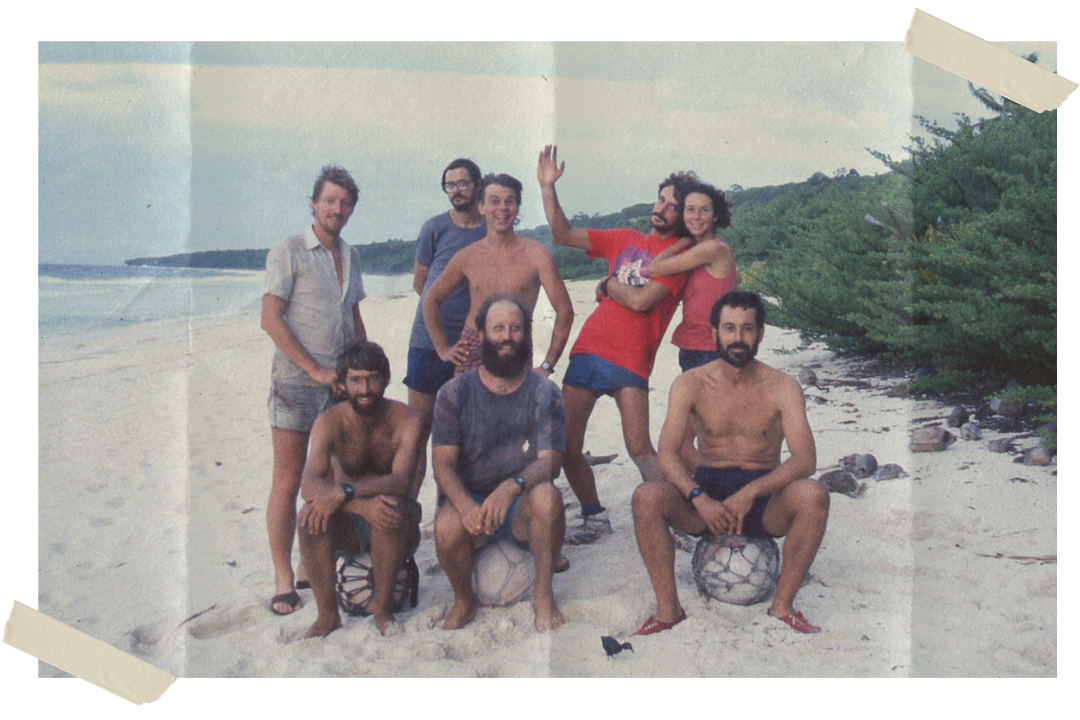
Pitcairn Group expedition team on Henderson Island (1990). Professor Weisler is in the front row, middle. Image: supplied.
Pitcairn Group expedition team on Henderson Island (1990). Professor Weisler is in the front row, middle. Image: supplied.
Henderson Island is part of the Pitcairn Island group, a tiny collection of islands sitting in the vast blue of the Pacific Ocean. Uninhabited since colonisation by Polynesians between the 13th and 16th centuries, it is one of the few remaining atolls with an ecology relatively untouched by humans.
With no major land mass for 5000 kilometres – that’s more than the length of Australia – Henderson Island is about as isolated as you can get.
“We went to this island to research because it was thought to be ‘pristine’ – though of course, nowhere is pristine anymore,” Professor Weisler said.
“But it was uninhabited, so we brought everything there – food, tents; we had to catch our own rainwater to drink. Water was scarce so we made sure to eat things that had moisture in them, like fish.
“We had to bathe in the ocean. People say places like that are paradise – but try taking a saltwater bath for 5 months!”
Image: Henderson Island in the Pitcairn Group. Ron Van Oers/Unesco
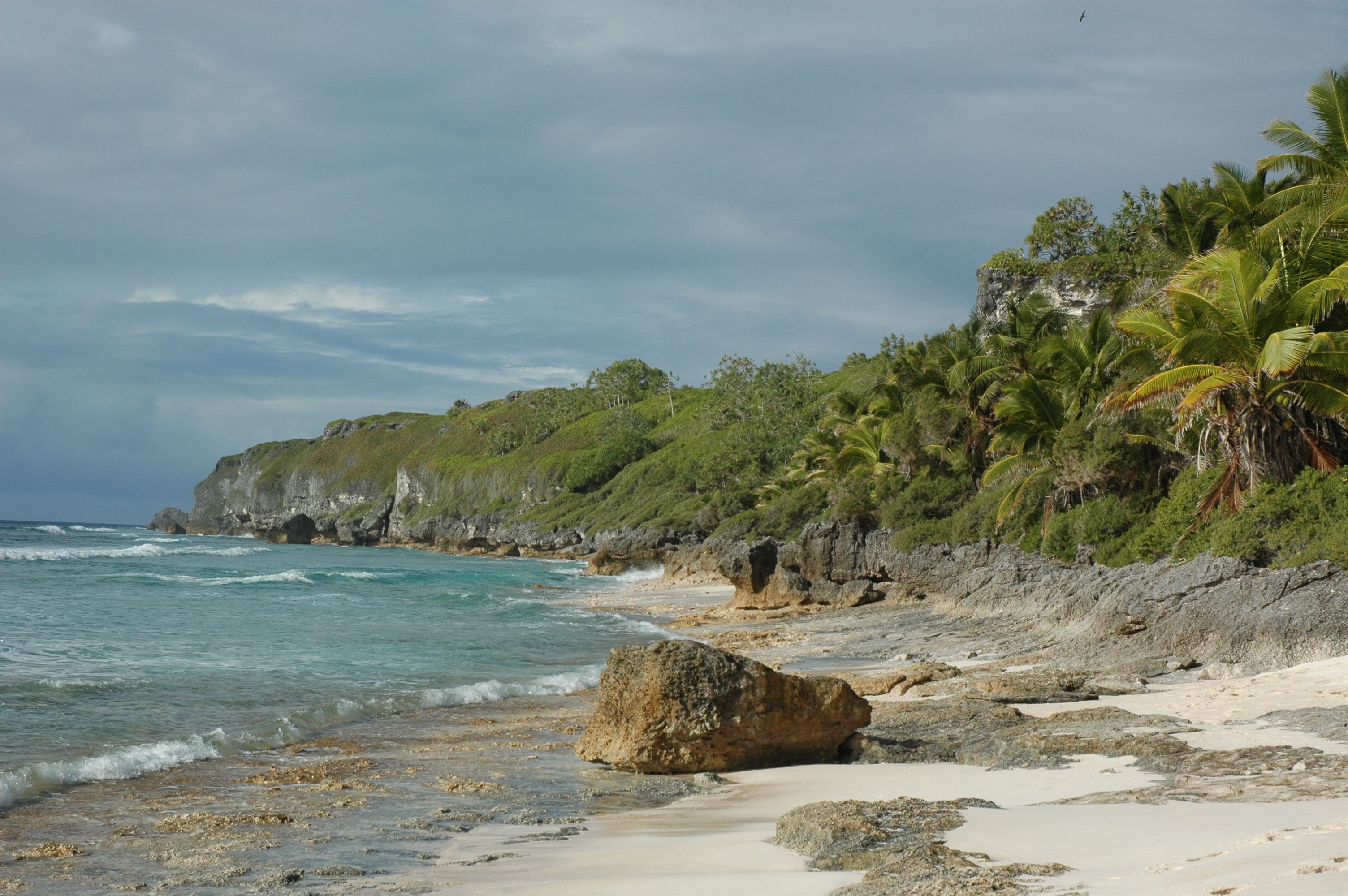
The research crew camped on the white-sand beaches, where the clear waters beyond teemed with a rich ecosystem of fish, lobsters and octopus – which became their main source of food.
“We brought dried and canned food, and food we could rehydrate, but we mostly fished,” Professor Weisler said.
“What we didn’t have was fresh food to eat. You couldn’t grow anything that could potentially take hold because the island is a World Heritage Site.
“I brought some seeds for making sprouts, so those lasted for a little while. But I tell you – you really just crave having a potato.”
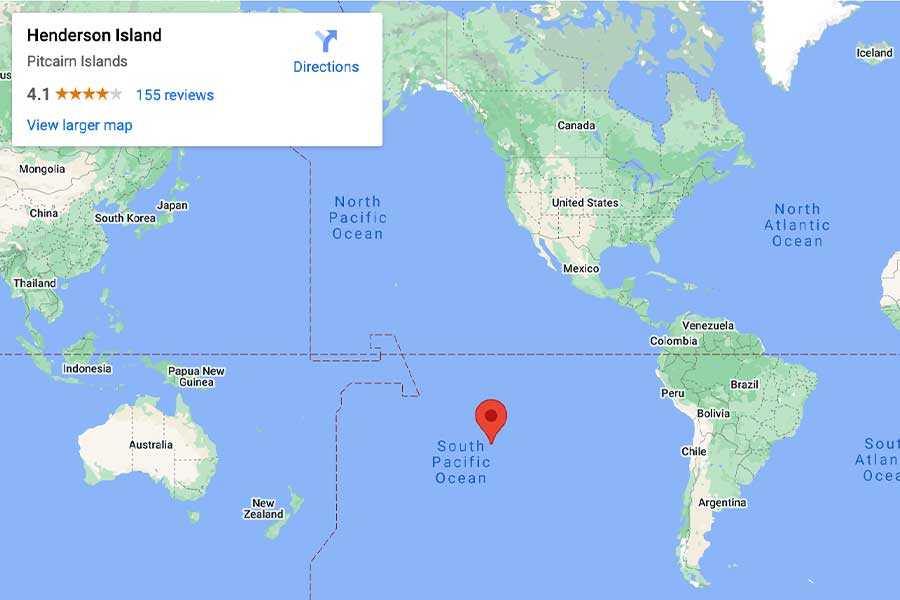
The remote Henderson Island lies between Australia and South America.
The remote Henderson Island lies between Australia and South America.
Beyond a visit from a BBC filming crew and the odd yacht that stumbled unexpectedly across the scientists, the team had only themselves and the nature around them to find entertainment.
“There were often 6 to 8 of us, but sometimes, there were just 2 of us – so you had to get along,” Professor Weisler said.
“The whole experience was really intense, but it was also quite relaxing – you don’t realise how bombarded we all are with technology, so when you take all that away, it’s fantastic.
“Particularly if you’re a natural history kind of person, as we all were. The birds on the island weren’t afraid of people, so you could get pretty close to some remarkable seabirds.
“And, of course, the fishing was great.”
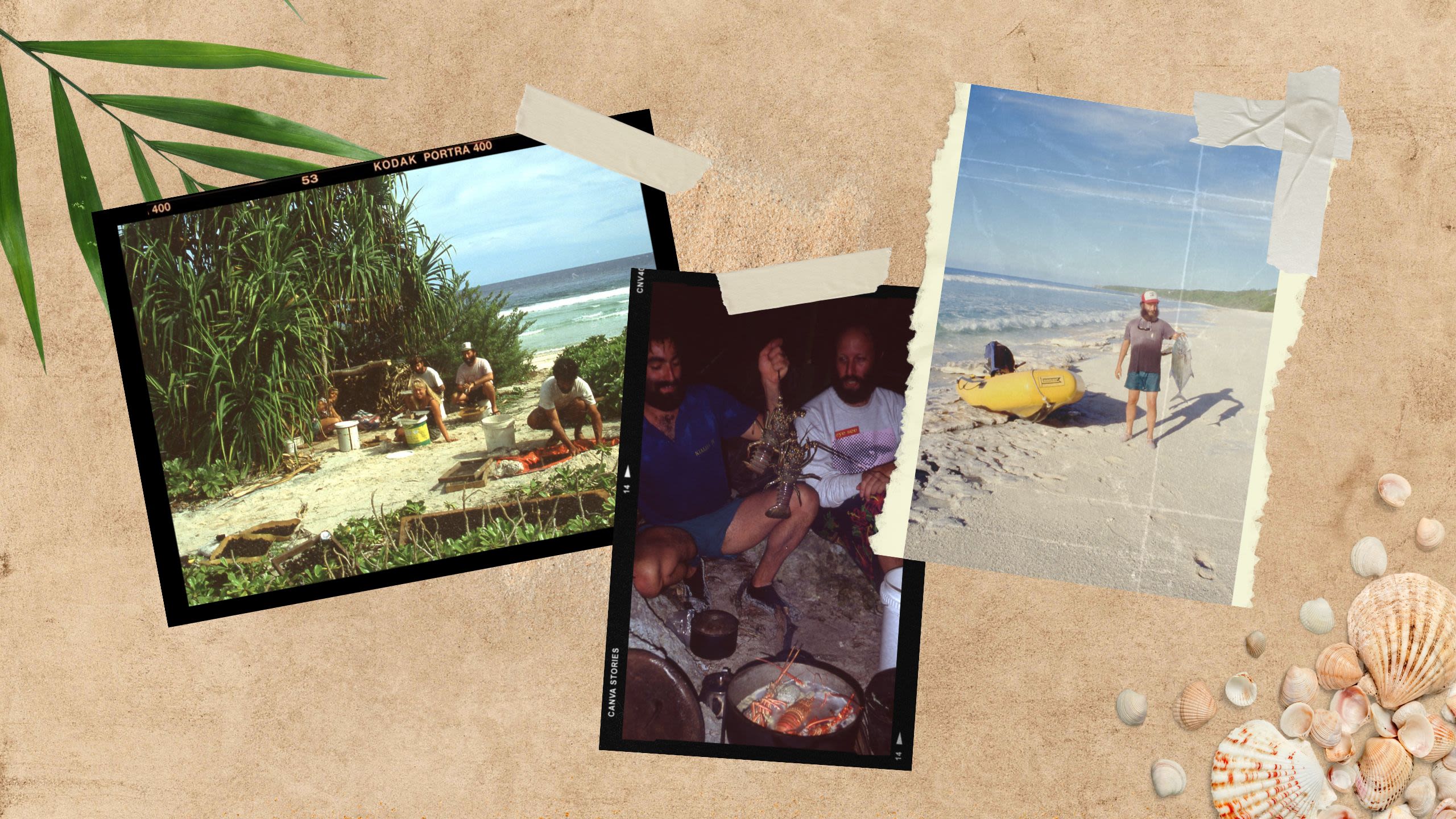
Discovering ancient trade
Beyond his expedition to Henderson Island, Professor Weisler has spent long stretches of his career living among remote communities – particularly in the Pacific – studying the lives of our ancient ancestors.
Through his work, he’s made some astounding discoveries.
“One of my greatest achievements came from these basalt adzes found in a group of islands, called the Tuamotus, in French Polynesia,” Professor Weisler said.
“The Tuamotus are low, coral atolls with no naturally occurring instances of this stone, so we did chemistry on the rock [to learn of its geographic origins].
“We found that one of the adzes originated from the Hawaiian Islands, which are 4000 kilometres of open ocean away from the Tuamotus.”
This incredible discovery is the longest recorded ocean voyage in prehistory. The journey would have been made in log dug-out canoes and out of sight of land the entire time, using celestial navigation to guide a course across the Pacific.
“Those are the things that are really incredible,” Professor Weisler said.
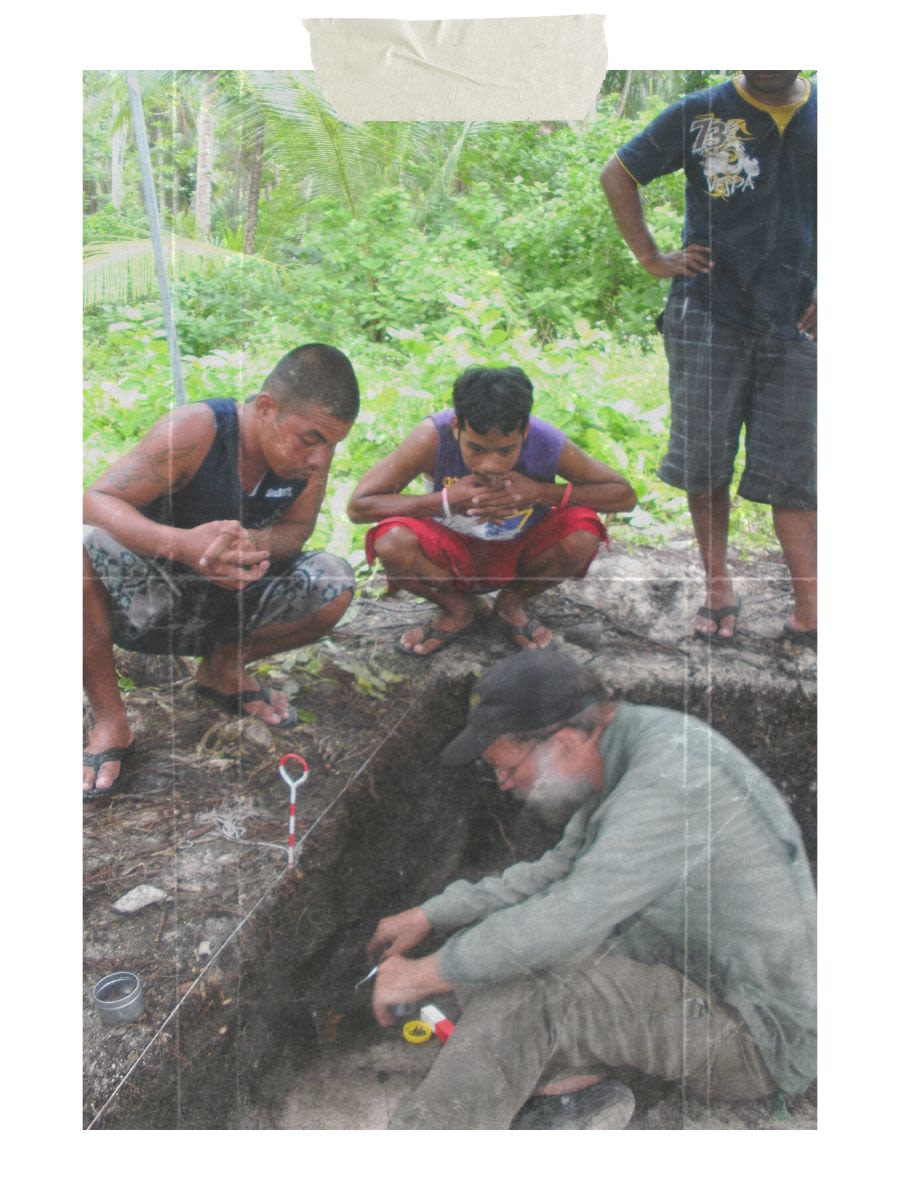
Excavations in progress on Ebon Atoll, Marshall Islands (2012). Image: supplied.
Excavations in progress on Ebon Atoll, Marshall Islands (2012). Image: supplied.
Professor Weisler’s work has also explored the innovative ways that communities have lived on islands with limited resources for thousands of years, including lessons to be learned for sustainability today.
“I’m interested in how people have survived on small islands with very few resources – some with continuous occupation for 2000 years,” Professor Weisler said.
“There are restricted natural resources on the islands, so there may be something that these people figured out (about using them sustainably) that could be of value to us today.”
“That’s one of the real benefits of archaeology – we can understand this over long periods of time, because we have data sets for hundreds to thousands of years.”

The end of an era, but busier than ever
To the perennial question of ‘why does all this matter?’, Professor Weisler – as someone who has dedicated his life to archaeology – has an easy answer.
“The history of human society is worth knowing about – point blank, that’s it,” Professor Weisler said.
“We should know about our species as much as we can.
“We can learn stories about sustainability and resilience, but it’s also not just about how to make a better screwdriver, or something that’s worth money.
“The humanities are the glue that keeps societies together. Without the continual pursuit of funding, the humanities and being able to tell these stories – not just about the past, but about the human condition today – are essential to keeping us human.”
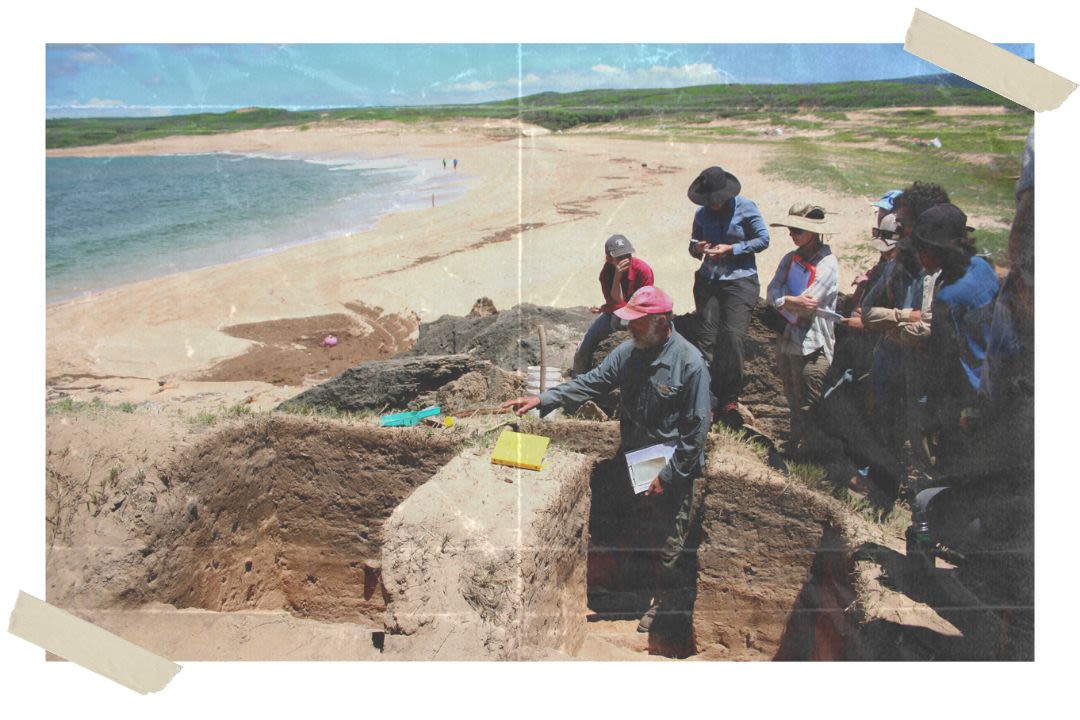
UQ Moloka'i, Hawaii field school (2019). Professor Weisler is explaining the excavations to students. Image: supplied
UQ Moloka'i, Hawaii field school (2019). Professor Weisler is explaining the excavations to students. Image: supplied
And how does Professor Weisler feel about retirement?
“I’m going to be doing everything that I’ve been doing for the past 40-odd years except for administration,” Professor Weisler said.
“I’ll keep doing my research – I've got a lot of projects that I'm working on.
“That’s the benefit of spending your life doing something that you love: you don’t really retire; you can just spend more time doing what you want to do.
“As a colleague of mine once said, he’s never been busier than when he retired.”
Professor Weisler is delivering the 2022 Hall Lecture as part of UQ’s Research and Innovation Week (12 – 16 September).


